ISBER 2016 – Our Q & A Update
What do you think were the most interesting issues raised at the conference?
There was a strong European presence, which translated to some really interesting discussions about biobank collaboration. Biobank networking, standards and certification were all topics of interest. I was really interested to learn of the work of BBMRI-ERIC, which is a European organisation that is developing broad infrastructure for biobanks and biomolecular resources. For example, BBMRI-ERIC has developed the BiobankCloud, an open-source software platform for data storage and linkage. I was also impressed by the use of cloud informatics to network biobanks in Shanghai, China.
You mention certification, how does Australia compare?
We’re currently implementing a certification programme for biobanks in NSW, and the ISBER meeting gave me the opportunity to meet our colleagues from Canada who developed the certification programme that we’re adapting for Australian biobanks. This will be launched by NSW Health Pathology in June 2016.
It sounds like the networking of biobanks across Europe, even across borders is advancing at a pace. How is that funded?
I think it’s political will and commitment to advancing science through biobanking, which has translated into money to work together. Some funding is available through BBMRI-ERIC. Other countries such as Spain have mechanisms to fund biobanking at a national level and to promote collaboration through biobank networks.
Was there any discussion relating to brain tumour tissue banking in particular?
There was no specific discussion of brain tumour tissue banking, but the discussions around biobank networking and certification were very relevant. I also joined an ISBER working group to promote biobanking for rare diseases.
What are your expectations with that?
ISBER working groups can be very productive, and are a good way of contacting like-minded researchers in other countries. Every attendee of the 2016 meeting left with a flyer describing BCBA!
How does biobanking in Australia compare to the rest of the world?
Biobanks in Australia don’t enjoy secure funding for biobank operations or collaboration, so it’s no surprise that we aren’t leading the world in either area. We also seem to be more risk-averse when it comes to data linkage. However, funding the implementation of improved biobank standards seems to be a challenge for everyone.
Was there a takeaway message from the conference?
Biobanking in Australia needs to be looking at international standards, taking advantage of international networks where possible, and adopting what has been shown to work elsewhere. There are great opportunities to learn from countries that have already done much of the hard work.








